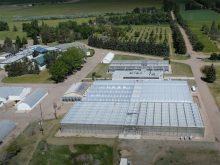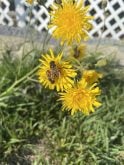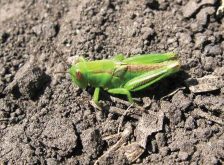Why are neonicotinoids attracting so much attention?
The controversy around neonicotinoids is a global one. There are places where neonicotinoids are associated with bee kills and there are places where they are not.
The science around neonics and their effects on bees has some inconsistent elements. There hasn’t been any strong colony-level field tests, for example, that have demonstrated any significant impact on bees. But there are many reasons to think that neonics might be having an impact on bees. Scientifically, it’s not as clear a situation as with other pesticides.
The real issue is deeper than neonics — and I think it’s unfortunate that things have been focused on this one pesticide in particular. There are many agricultural chemicals that have similar effects.
It’s not the immediate toxicity. It’s the low-level exposure to many compounds that is the root of the problem that bees are having. The chemicals neonics replaced were way worse.

Do neonics actually have negative effects on bees? What are other factors that affect bee health?
They can diminish bees’ orientation ability and bees’ capacity to respond to diseases and pests. They also diminish bees’ ability to detoxify other pesticides, and this has the greatest effect on bees today.
The diminishment of the bee’s ability to detoxify is not unique to neonics. Other chemicals, like miticides and antibiotics put into the hives, do the same thing. In most areas, bees are exposed to chemicals that are diminishing their disease resistance and detoxification abilities at the same time that disease and pests are becoming much more significant issues in beekeeping.
Bees also have less to forage on, and less diversity to forage on. That’s proving to be a significant issue. When bees are not well fed, they are more susceptible to diseases and pest problems.
Read Also

Recommendations in the mature assets strategy could cause potential problems for landholders
The Western Stock Growers’ Association urges producers to pay attention to the potential changes to Alberta’s Mature Assets Strategy.
Why are consumers so concerned about neonics?
It’s easy to hope there’s one cause for a problem.
People latch on to one thing because it’s much easier than dealing with a nuanced situation that is at the root of most of the environmental issues we face. In the 1990s, someone got the idea that neonicotinoids were causing problems and that caught on.
Neonics are the No. 1 selling product of all insecticides. It’s tempting to look at something that widespread as a cause.
















